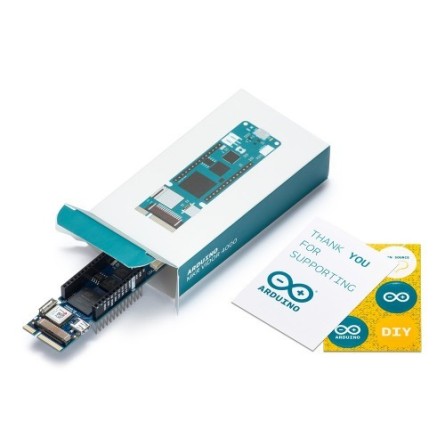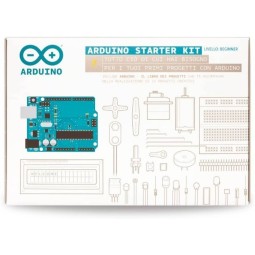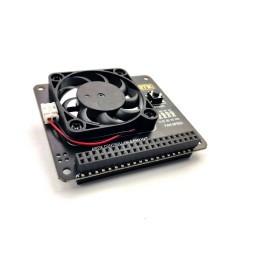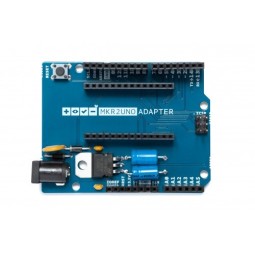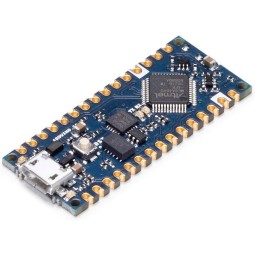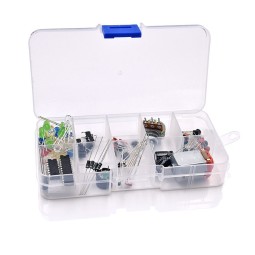- Out-of-Stock
ARDUINO MKR VIDOR 4000
-
TheArduino MKR Vidor 4000 features FPGAs: the most powerful reprogrammable chips, ideal for adding power to your projects!
-
Includes the Intel® Cyclone® 10CL016 processor for FPGA and 32-bit Cortex-M0 microprocessor SAMD21
-
Wi-Fi / Bluetooth connectivity with NINA-W102 and cyber security with ECC508 cryptographic chip
- Vidor is the board that invites you to experiment, to be precise and to calculate at high speed
Features
-
Flash Memory 2MB
-
8MB SDRAM
-
Clock speed 48 MHz - up to 200 MHz
-
Intel Cyclone 10CL016 FPGA
-
Mini PCI Express slot with programmable pins
-
MIPI camera connector
-
Micro HDMI video output
-
Circuit operating voltage 3.3V
-
Digital I/O pins: 22 connectors + 25 Mini PCI Express
-
PWM Pins: All Pins
-
UART: Up to 7 (depends on FPGA configuration)
-
SPI: Up to 7 (depends on FPGA configuration)
-
I2C: Up to 7 (depends on FPGA configuration)
-
Continuous current per I/O pin: 4 or 8 mA
The board's main chip is Intel® Cyclone® 10CL016; it contains 16K logic elements, 504KB of on-board RAM, and 56 HW 18x18-bit multipliers for high-speed DSP operations. Each pin can switch at over 150 MHz and can be configured for functions such as UART, (Q) SPI, high resolution/high frequency PWM, quadrature encoder, I2C, I2S, Sigma Delta DAC, etc.
The board comes with 8MB of SRAM to support FPGA operations on video and audio. The FPGA code is stored in a 2 MB QSPI Flash chip, of which 1 MB is allocated to user applications. High-speed DSP operations can be performed for audio and video processing. Therefore, the Vidor includes a Micro HDMI connector for audio and video output and a MIPI camera connector for video input. All pins on the board are driven by both SAMD21 and FPGA, while respecting the MKR family format. Finally, there is a Mini PCI Express connector with up to 25 user-programmable pins, which can be used to connect your FPGA as a device to a computer or to create your own PCI interfaces.
The board's microcontroller is a 32-bit, low-power SAMD21 Arm® Cortex®-M0, as in other boards in the Arduino MKR family. The WiFi and Bluetooth® connectivity is realized with a u-blox module, the NINA-W10, a low power chipset operating in the 2.4 GHz range. In addition, secure communication is ensured by the Microchip® ECC508 cryptographic chip. On top of that, you can find a battery charger and a directional RGB LED on board.
Experiment with your own processors inside the FPGA and run them in parallel with the other microcontroller on the board! With Vidor, you can create a board where all pins are PWM signals controlling the speed of the motors.

The power of the FPGA
If you are not familiar with the term, an FPGA is an integrated circuit composed of an array of programmable cells, a chip where the logic blocks controlling the operations have not been written at the time of manufacture. It is possible to write your own processor, a series of dedicated high frequency PWM outputs, a digital sound mixer, a video overlay machine or anything else you can imagine.
The main limitation is the amount of logic gates needed to design any of these applications. To illustrate how such a powerful processor can be integrated into your workflow, Arduino has created a series of libraries that can perform simple tasks integrating the microcontroller and specialized FPGA code.
If you are an FPGA-heavy developer, you will be happy to know thatArduino has released a series of libraries that provide many of the basic features needed for your projects. You can access this Github group containing all the open source Vidor code.
The doors to hacking
The MKR Vidor 4000 is a multiprocessor device that invites experimentation. Hacking the WiFiNINA module allows you, for example, to use both WiFi and BLE / Bluetooth® on the board. Another possibility is to have an ultra-light version of Linux running on the module, while the main microcontroller controls low-level devices such as motors or displays. These experimental techniques require advanced hacking on your end. They are possible by modifying the firmware of the module that you can find in the github repositories.
WARNING: this kind of hacking breaks the certification of your WiFiNINA module, do it at your own risk.
Battery power supply
Its USB port can be used to power the card (5V). It has a Li-Po charging circuit which allows theArduino MKR Vidor 4000 to work on battery or on an external 5V source, charging the Li-Po battery while working on external power supply. Switching from one source to the other is done automatically.
Useful documentation
Getting started
Libraries
Tutorials
Video
Data sheet
- Connectivity
- 8 digital I/O pins*~13 PWM pins (0 .. 8, 10, 12, 18 / A3, 19 / A4)*~UART*~SPI*~I2C*~7-pin analog input (ADC 8/10/12 bit)*~1 pin analog output (DAC 10 bit)*~8 External switches (0, 1, 4, 5, 6, 7, 8, 16 / A1, 17 / A2)*~Full-Speed USB Device and embedded Host
- Type of storage
- CPU flash memory: 256 KB*~SRAM: 32 KB
- Power supply
- Card power supply (USB / VIN): 5v
- Dimensions
- 83 x 25mm
- Weight
- 43.5gr
Customers who bought this product also bought:
Questions (0)
No customer questions for the moment.


 Français
Français
 Español
Español
 Italiano
Italiano
 Deutsch
Deutsch
 Portugais
Portugais
